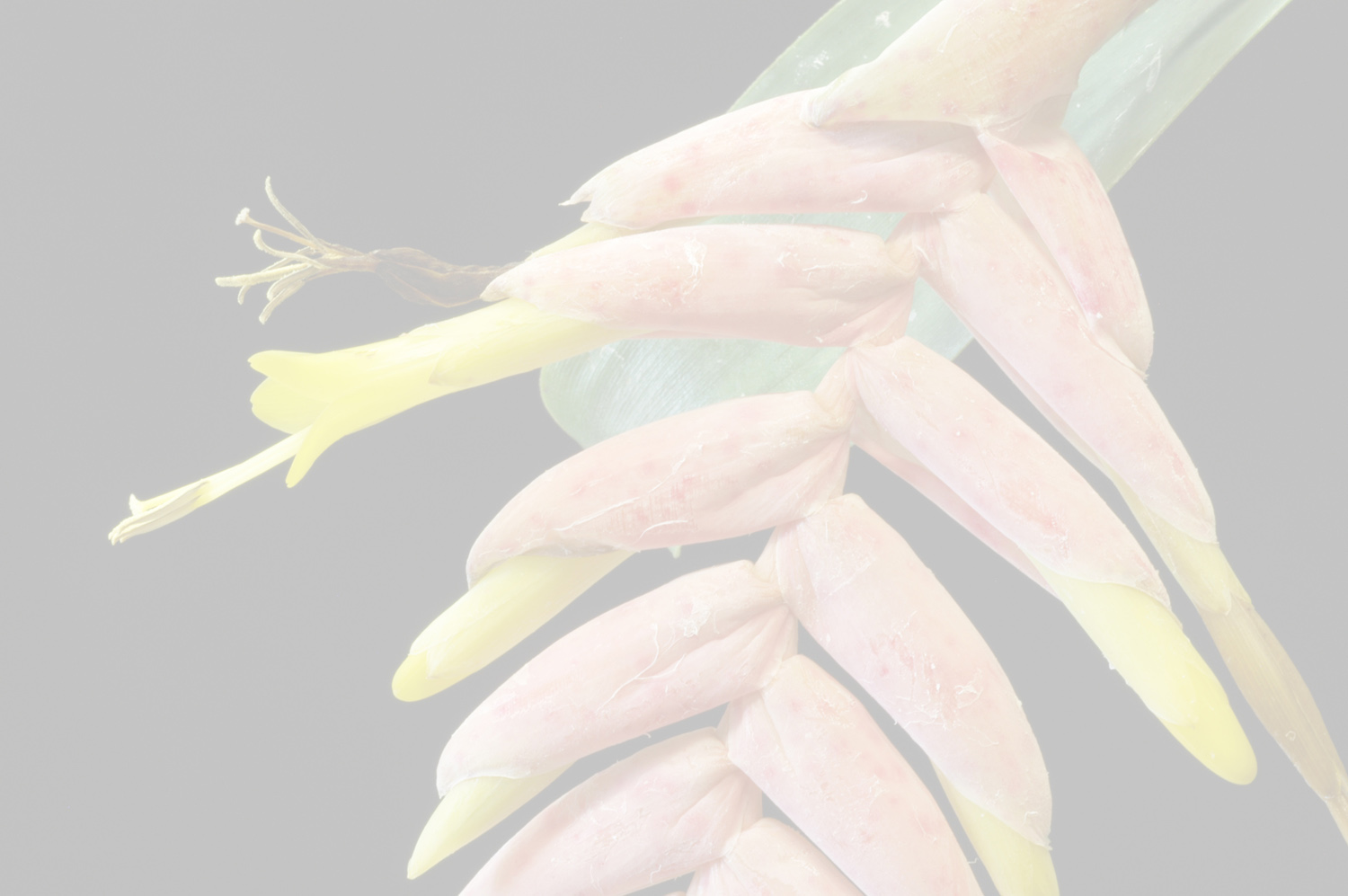

plant acaulescent, flowering to over 1m long, with a large, spreading, 50–60 cm tall rosette of many pale-green leaves. leaves thin-coriaceous, 50- 70 cm long, much exceeded by the inflorescence; sheath distinct, contracted into the blades, elliptic, inflated-convex, 12–17 x 7.5–8.5 cm, with broad and pale membranaceous margins, (sub-)densely appressed-lepidote on both sides, pale-brown to castaneous at the base; blade arching, ligulate, 40–55 x 5.5–6.5 cm rounded and apiculate, obscurely lepidote or glabrescent, pale-green. inflorescence erect, laxly or subdensely once-branched of 3–10, polystichously arranged spikes, or sometimes twice-branched, then the lower branches digitate of two spikes, glabrous; peduncle 30–85 cm long, 7–10 mm in diam., glabrous, coral-red, nearly all over covered by bracts; peduncle bracts erect, densely imbricate, chartaceous, ovate (-oblong), apiculate, exceeding the internodes, but often so narrow as to expose the peduncle in part, sparsely and minutely appressed-lepidote at least at the apex; axis exposed, more or less elongate, slightly flexuous, angled or terete; primary bracts as the upper peduncle bracts, spreading with the spikes, much exceeding the short peduncle, the upper ones not much larger than the floral bracts, obscurely lepidote at the base or glabrous, red; spikes linear-lanceolate, strongly complanate, 9–26 x 1.5–2 cm, acutish, densely and distichously 10–30-flowered, with one sterile bract at the apex; stipe suberect or spreading, 1–2(–3) cm long, only bearing a prophyl-like bract (halfway); rachis for most part exposed (when dry), flexuous, sharply angled, rugose, deep-red; floral bracts erect, imbricate, but so narrow as to expose the rachis, fleshy coriaceous, with slightly veined surface, ovate-oblong, (19-)2.5–2.8 cm long, 2–4 times as long as the internodes, about equaling the sepals, apiculate or acutish, finely carinate in upper half, glabrous, yellow-green and tinged with red in lower part. flowers contiguous, (sub-)sessile; receptacle narrowly obconic, ca 2 mm long, bicarinate; sepals coriaceous, with faintly veined surface at the base only when dry, lanceolate, (19-)2.2–2.4 cm long, acutish to narrowly rounded, evenly short-connate, adaxial ones somewhat more connate and thickened at the base (not distinctly carinate), slightly incurved at the extreme apex, glabrous; petals ca 9 mm connate in a common tube with the antecepalous filaments, iinear-ligulate, over 3 cm long, white, bearing 2 largely adnate ligules at the base; ligules ca 1.1 cm long, free lobes elliptic, ca 2 mm long, entire or nearly so, obtuse. stamens included, all equal in length, exceeding the pistil by half of the anthers; filament adnate to the petals, free part sub-terete; anther sub-basifixed, linear-sagittate, 6–7 mm long (free basal-lobes ca 1 mm long). pistil: ovary slenderly ovoid, attenuate from near the base, then abruptly contracted into the slender style, stigmas short-sublinear, flat. fruits very slenderly ovoid, equaling the sepals, ca 0.5 cm in diam., attenuate, then abruptly short-beaked.Edited from (5---0-2019): Gouda 1987. Bromeliaceae (subfamily Tillandsioideae) in Görts-van Rijn, A.R.A. (ed.) Flora of the Guiana\'s Series A: Phanerogams.